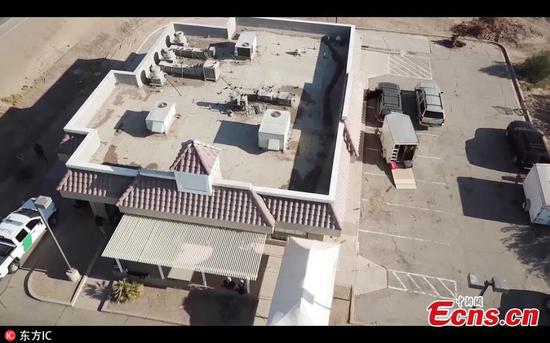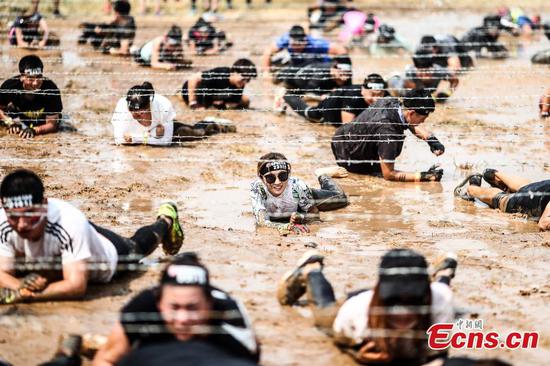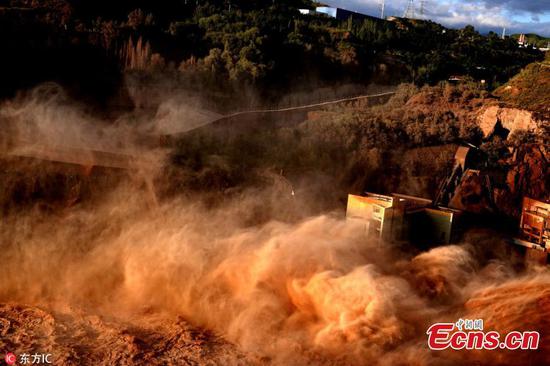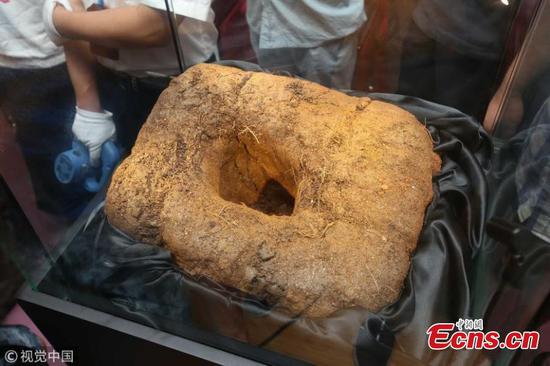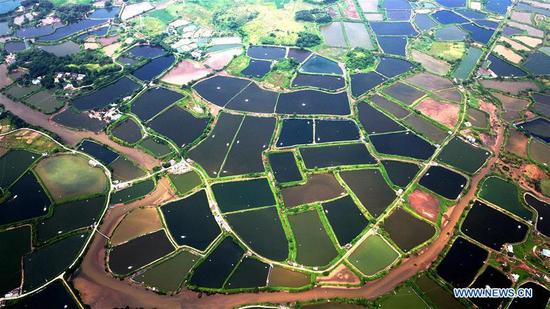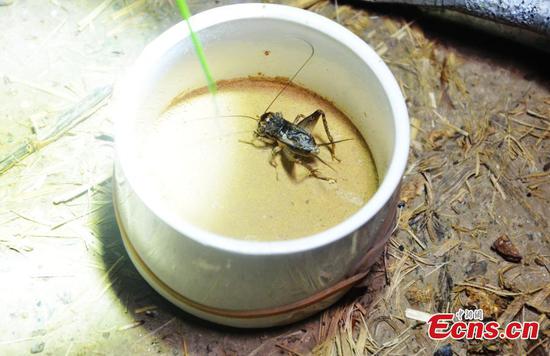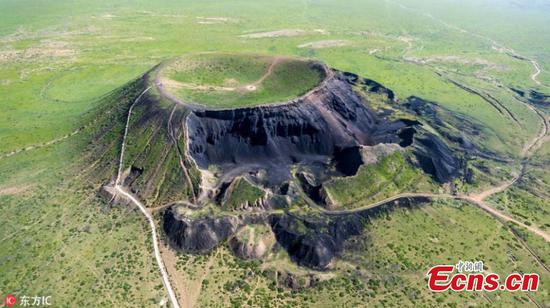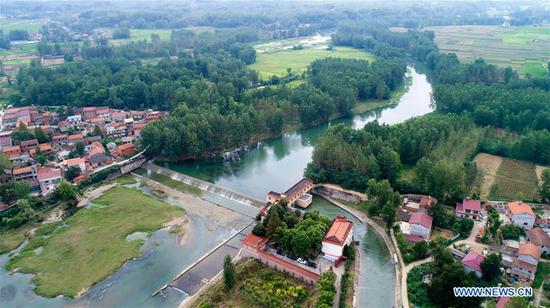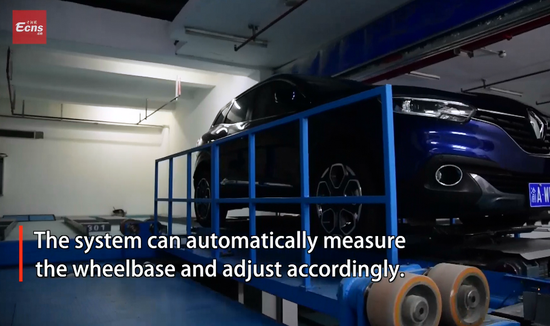
Residents empty water from a pipe before moving it to another location for flood drainage in Mengjiaguan village in Shouguang, Shandong Province, on Sunday. (Photo/Jinan Times)
Though a new round of rainfall has not arrived as forecast, Tian Xiaofei was worried about the fate of the remaining 20,000 greenhouses in his jurisdiction - structures still standing in knee-deep water.
Tian, an official of Houzhen in Shouguang, Shandong province, has seen more than 10,000 greenhouses collapse in his town alone, as the roaring pumps were strained by unusually heavy flooding that hit the coastal province last week.
"I have no idea how many greenhouses can survive, and the coming rain only dims hope," he said.
Tian was among many in Shouguang-one of China's biggest vegetable bases-who are concerned over another round of rainfall that was predicted to arrive late on Monday.
The vegetable capital was among the most severely hit by Typhoon Rumbia and Tropical Storm Yagi, which have wreaked havoc in the coastal province since Aug 18.
The meteorological service of Weifang-a prefecture-level city that oversees Shouguang-has vowed to closely monitor the rain, which is expected to last until Wednesday, and to publish timely updates.
Disinfection work is underway in Weifang, and electrical service, traffic and telecommunications services have been restored in most of the city. However, many places are still racing against time to drain the remaining water.
In response to the downpours, thousands of firefighters from across the country, along with water pumps, have been arriving to aid the relief effort, according to the Weifang government.
Weifang ordered four reservoirs in the upper section of the Mihe River to discharge water late on Sunday.
The two larger ones were ordered to discharge at a rate of 100 cubic meters per second, and to double that amount on Monday, according to a document published by the Shouguang flood control authority.
The Mihe flows down from Shandong's Linqu county to the Bohai Sea at Shouguang.
To avoid the bursting of dams in the upper Mihe, Weifang increased the discharge rate to 320 cubic meters per second for three reservoirs just after the storms hit.
Many have blamed the disaster on the local government's failure to discharge water in advance, despite flood warnings. Water discharges after the storms hit left limited time for the evacuation of livestock, they said.
Local authorities said they had underestimated Rumbia's strength and added that water, if not discharged, could have broken dams and caused even greater damage.
Meng Hongxia, from Shouguang's Qijiazhuang village, was covering her broken greenhouse in preparation for the rain.
"I heard the amount of water discharged this time is much smaller. The government should be more experienced this time," she said.












